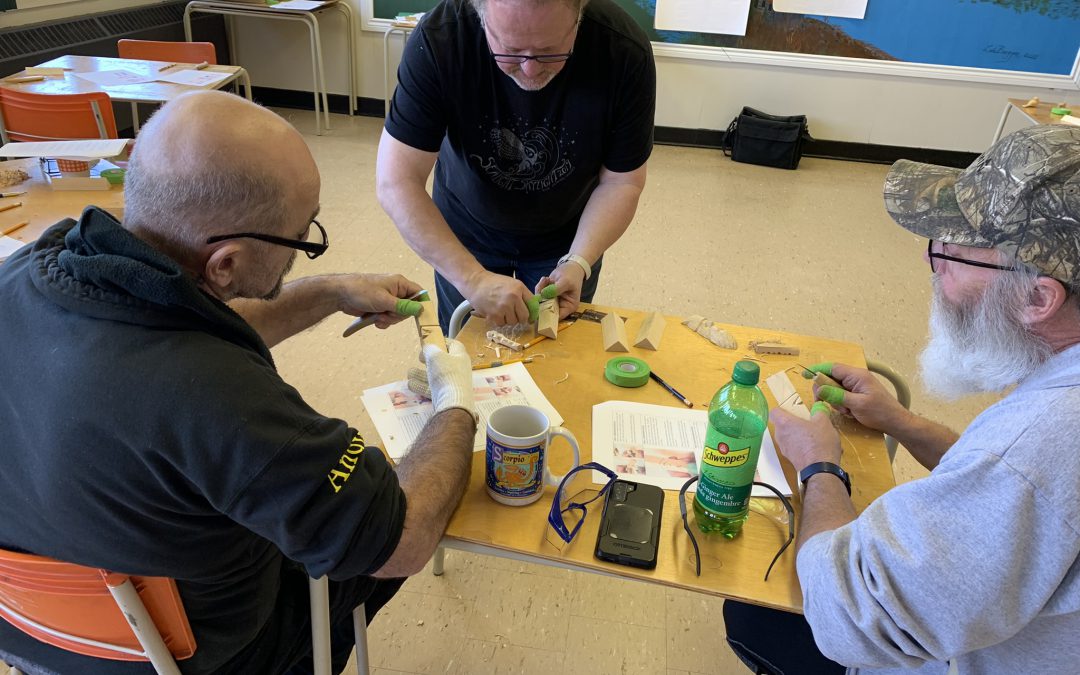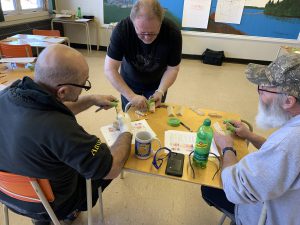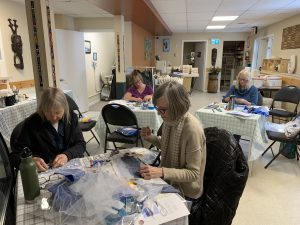“It’s not a learning exercise” said the event coordinator. She was trying to “school” me on why I shouldn’t help my fellow club members of the Atlantic Woodworkers Association (AWA) discover that her clients, a group of interior designers, had compromised their own professional standards to accept an offer from an out-of-work tradesperson for free design and construction of a set of awards trophies. Meanwhile, I was trying to school her on how she and her clients might take their own lesson from the obvious (to me) paradox. It’s a long story, and one I might tell in a future rant, but it got me to thinking about the lessons we can learn from both success and failure and about the imperative of teaching and learning in arts and crafts.
IN the past few years, Chez Craft has offered many courses in woodworking and fabric art and we anticipate scaling that up in future. It is more than just another line of revenue to us – it seems like the right thing to do, especially when you think about those who have, in their own way, contributed to our own skills. Formal and informal teaching and learning have been essential in reaching the level of ability and creativity we are able to demonstrate. From skills demonstrations at AWA meetings, to the many courses Mary Elizabeth and I have attended in schools and community centres across the province, to hours of YouTube and blog lessons, we have been able to advance largely because someone thought it important enough to teach or demonstrate what they themselves have learned. So, the circle of learning goes on and skills get passed down from person to person and generation to generation. This form of knowledge transfer is critical in many areas of vocational education, but especially so in the area of art and craft.
There is a saying that goes, “If you can, do – if not, teach” which is a bit of an insult to teaching, suggesting that if teachers had skill, they’d apply it in a trade rather than in instructional form. In our provincial college system, instructors are required to demonstrate that they have done the work for at least five years before being considered for a teaching position. I think that people can mentor at any level of skill as long as they understand that apprenticeship is about a learning relationship between two people who can be at various times both teacher and student.
As Mary Elizabeth and I offer our instruction to groups of participants who come to experience the learning in the camaraderie of other learners, we always experience learning ourselves – about the techniques we are demonstrating, how others might interpret or modify the technique, about how other perspectives lead to new insights and approaches, and about philosophical approaches to teaching. Becoming a better teacher often requires that we first become a better learner. It also requires the humility to understand that we do not need to know everything about a subject when the notion of apprenticeship allows for the student to become the teacher as needed or as may happen incidentally. Openness to one’s limitations can be valuable especially in accepting that failures can often be the most valuable teachable moment of all (Crash ‘n’ Learn).
Look for announcements on our website and Facebook page for upcoming classes in wood and fabric art. We hope to see you there and to learn together in a future workshop.
Meanwhile, if you can – teach.






Recent Comments